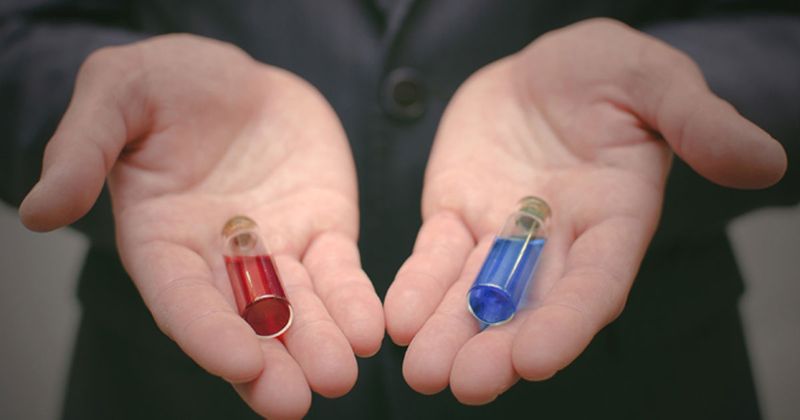Great Debate tackles when to use JAK inhibitors after methotrexate failure in RA
The ACR’s annual Great Debate featured spirited arguments made for and against the use of janus kinase inhibitors before biologic therapy in the setting of methotrexate failure in rheumatoid arthritis.
Vibeke Strand, MD, adjunct clinical professor in the division of immunology/rheumatology at Stanford University, argued for JAK inhibitors in this setting, while Michael E. Weinblatt, MD, co-director of clinical rheumatology at Brigham and Women’s Hospital, argued against.

“There is well-established efficacy for this class in RA based on head-to-head comparisons,” Strand said. “The JAK inhibitor class is an exciting development for rheumatology. In RA, they should be used early.”
“We have 22 years of approved clinical use of TNF inhibitors to draw from, but only 8 years for JAK inhibitors,” Weinblatt said, noting that “equal efficacy” of the two classes makes TNF inhibition the more attractive choice.
Fast-acting, long-lasting

Strand’s argument included several pillars, one of which is that the three JAK inhibitors with FDA approval — baricitinib (Olumiant, Eli Lilly & Co.), tofacitinib (Xeljanz, Pfizer) and upadacitinib (Rinvoq, Abbvie) — along with others such as filgotinib (Jyseleca, Gilead Sciences), yield “clinical responses that appear similar,” she said. “All JAK inhibitors that have been studied in RA are effective.”
This efficacy is fast-acting and durable, according to Strand. “ACR20 response is 1 week,” she said. “Morning stiffness can be reduced as early as 1 week. Patient global pain and function are reduced as soon as 3 days.”
Vitality, social function and mental health domains as assessed by the 36-Item Short Form Health Survey (SF-36) all improve rapidly with JAK inhibitors, Strand added.
Regarding durability, several data sets have shown that “response continues out to 6 months, with some improvements,” Strand said, with remission rates at 6 months ranging between 7% and 21%. “This is a significant number of patients in what we would consider a meaningful remission.”
For example, results from the COMPARE trial pitting upadacitinib against adalimumab, improvements were seen at 3 months and continued going forward from there. “Patients were no longer concerned about losing their jobs,” Strand said.
The fact that JAK inhibitors are oral agents is another bonus, making them “convenient” and “hassle-free,” according to Strand. Not surprisingly, then, patient-reported outcome (PRO) scores frequently “meet or exceed normal values.”
Regarding the safety profile, Strand acknowledged elevated herpes zoster incidence, thromboembolic events and gastrointestinal perforations as not uncommon. However, zoster incidence can be neutralized by a vaccine, while the cardiovascular and gastrointestinal outcomes can be mitigated with observation and early intervention when necessary. “Adverse events can resolve over a short time frame,” she said.
Experience is critical

The cornerstone of Weinblatt’s argument is that the clinical community has significantly more experience with TNF inhibitors, at 22 years and counting, than it does with the 8 years clinicians have had to work with drugs in the JAK class.
“There is a lot of data [for TNF inhibitors] going back to the early ’90s,” he said. “Every approved drug has been studied vs. methotrexate, there have been early remission studies, long-term studies and withdrawal studies.”
JAK inhibitors do not have such a robust body of evidence backing their use. The implication is clear: There is less uncertainty for a doctor prescribing a TNF inhibitor for rheumatoid arthritis than there is when a JAK inhibitor is prescribed.
Weinblatt went on to expand on the adverse events associated with JAK inhibitors that were mentioned by Strand. “Bacterial infections, including tuberculosis, are a concern,” he said, adding that pneumocystis and listeria have also occurred.
Reproductive issues may also arise with the JAK class, according to Weinblatt. He suggested that there are questions of whether women can remain on oral contraceptives or breastfeed while taking a JAK inhibitor. “Reproduction is ok with TNF inhibitors,” Weinblatt said. “We do not know that with JAK inhibitors.”
While Weinblatt admitted that thromboembolic events and GI perforations can indeed be mitigated, questions about whether JAK inhibitors can be used concurrently with anticoagulation have not been resolved, nor have questions about use in older patients or those with elevated BMI.
The solution to these concerns is simple, for Weinblatt. “Give them a TNF inhibitor first,” he said. “If they are not responding at 12 weeks, give them another molecule.”
If there is a final argument against JAK inhibitors, at least for the moment, it is cost. He noted that while JAK biosimilar use is prevalent in other parts of the world, U.S. patients have not seen the savings associated with their use.
Weinblatt concluded that the combination of equal efficacy between TNF inhibitors and JAK inhibitors, along with dose flexibility for the TNF class, seals the deal. “For me, the choice is obvious,” Weinblatt said.

